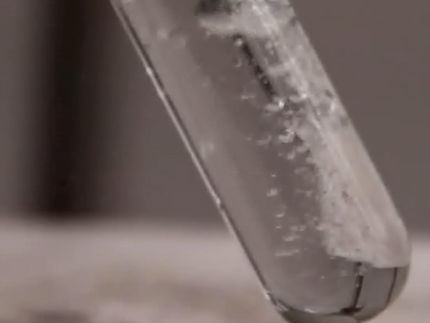Bidentate Chelates with Larger Spacers
Chelating Lewis acids prepared by double hydroalumination of dialkynylsilanes
Advertisement
Molecular oligoacceptors (chelating Lewis acids) are interesting compounds that are potentially applicable in phase-transfer processes, catalysis, or molecular recognition. Compounds with two or more coordinatively unsaturated tricoordinate aluminium or gallium atoms in a single molecule are particularly suitable for use as inverted chelating ligands. Chelating Lewis acids with a geminal arrangement of two acceptor functions have been shown to coordinate halide, thiolate, or benzoate anions. The remarkable efficacy of the chelating coordination of hydride ions by two aluminum atoms by the formation of persistent carbocations through C-H bond activation is also known. However, often the acceptor atoms occupy geminal positions at a bridging carbon atom, which results in relatively strained four-membered heterocycles upon coordination of single-atom donors. Therefore, a team of scientists led by Werner Uhl of the University of Münster (Germany) were very much interested in synthesizing compounds that have larger spacers between the acceptor functions in order to obtain more flexible backbones and hence better coordinating properties. The twofold hydroalumination of silicon-centered dialkynes was employed as a facile route for the preparation of such compounds, as reported in the European Journal of Inorganic Chemistry.
During the double hydroalumination of dialkynylsilanes, mixed alkenyl–alkynyl compounds resulting from the reduction of only one C≡C triple bond were obtained as intermediates, two of which were isolated and characterized. Hydroalumination of the remaining C≡C triple bond yielded dialkenyl species that were ideally preorganized to be applied as chelating Lewis acids, which was demonstrated by the chelation of chloride ions. In addition, an alkenyl–alkynylsilane intermediate gave a silacyclobutene derivative by 1,1-carbalumination; this is the second time such a reaction has been observed. The mechanism of this reaction was investigated by quantum chemical calculations.
This study reports an easy way to synthesize chelating Lewis acids with two geminal acceptor aluminum atoms. The chelating coordination of chloride ions by both aluminum atoms to give a six-membered ClAl2C2Si heterocycle was demonstrated.
Original publication
Most read news
Original publication
Werner Uhl et al.; "Hydroalumination of Bis(alkynyl)silanes: Generation of Chelating Lewis Acids, Their Application in the Coordination of Chloride Ions and a 1,1-Carbalumination Reaction."; European Journal of Inorganic Chemistry.
Organizations
Other news from the department science

Get the chemical industry in your inbox
By submitting this form you agree that LUMITOS AG will send you the newsletter(s) selected above by email. Your data will not be passed on to third parties. Your data will be stored and processed in accordance with our data protection regulations. LUMITOS may contact you by email for the purpose of advertising or market and opinion surveys. You can revoke your consent at any time without giving reasons to LUMITOS AG, Ernst-Augustin-Str. 2, 12489 Berlin, Germany or by e-mail at revoke@lumitos.com with effect for the future. In addition, each email contains a link to unsubscribe from the corresponding newsletter.


























































